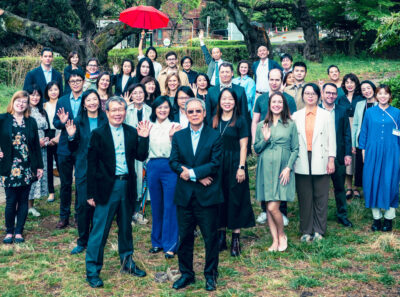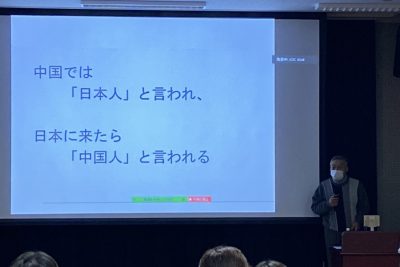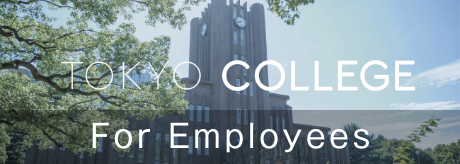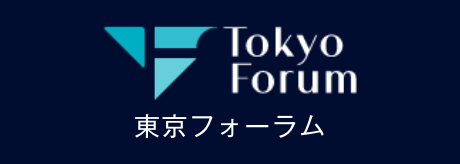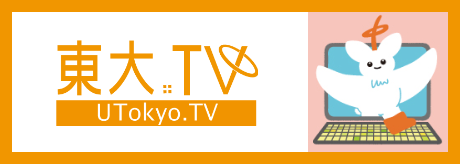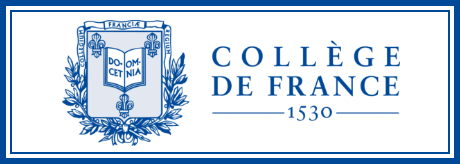Ethnographies of Life and Work: Researcher Series Ep. 1
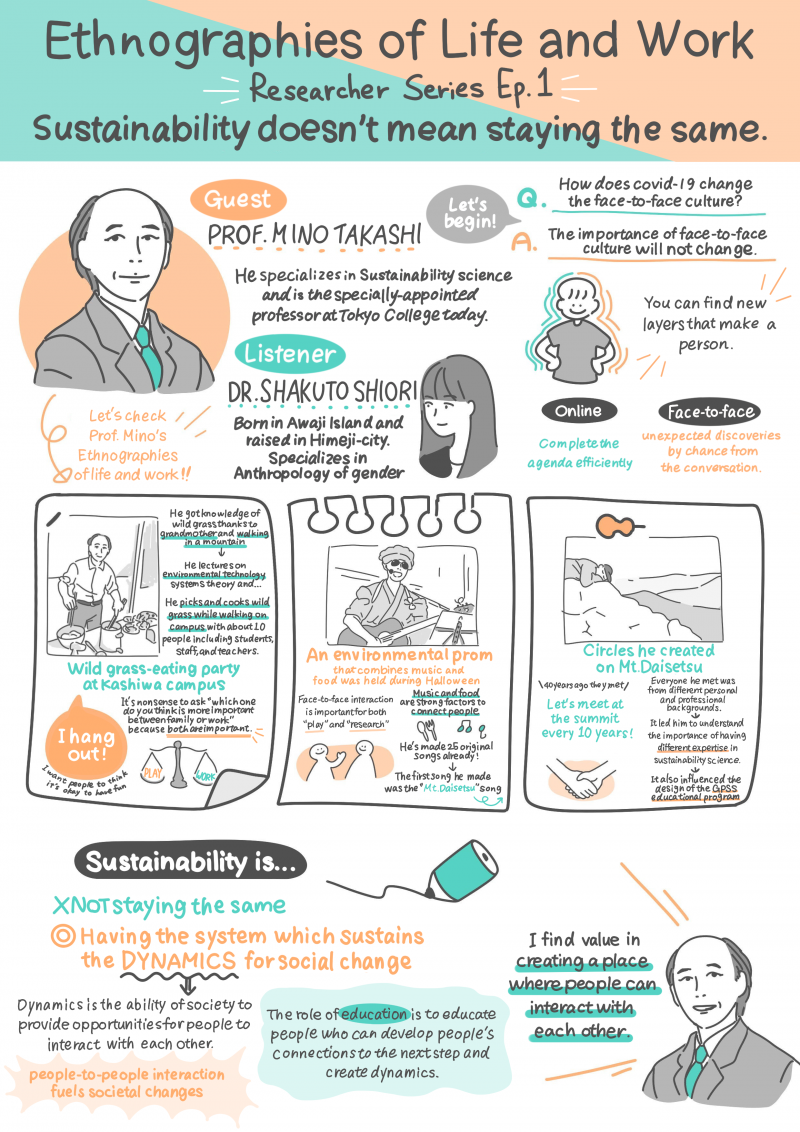
Graphic Recording ©Innovation Team dot Moe Ikeda
This piece is Episode 1 of the new series, "Ethnographies of Life and Work: Researchers." The series invites researchers in and out of the University of Tokyo to share three images that represent "life" for them. Through the dialogue over these images, we explore the relationship between life and/in work. For the introduction to the series, see here.
“Sustainability is not about continuing the same thing.”
Researcher self-introduction: MINO Takashi
Since I was a university student, I have participated in various “play activities” such as mountain climbing, cooking, and music and have enjoyed meeting all kinds of people through those activities. I have also started jogging because I want to be able to continue these activities as I grow older. My speciality is sustainability science. I was involved in the establishment in 2007 of the Graduate Program in Sustainability Science Global Leadership Initiative (GPSS-GLI), which is an interdisciplinary doctorate program that brings together students from around the world, within the University of Tokyo Graduate School of Frontier Sciences and also served as the program’s coordinator. At present, I am a Project Professor in the Tokyo College.
Interviewer self-introduction: SHAKUTO Shiori
I was born on Awaji Island and grew up in Himeji City. I couldn’t wait to see the world so when I turned 17 I went to attend a boarding school in India. Since then, curiosity has been my guiding compass and that is what led me to spend time in Australia and UK as a student and drew me to conduct research in Malaysia and Singapore, and, now, has brought me to Tokyo College. I specialise in Anthropology and Gender.
My first encounter with Dr. Mino was on the computer screen (which, these days, is not unusual). Based on reading his Tokyo College website, I admittedly developed an unconscious image that he was a STEM scientist. Which is likely why I was surprised when I saw Dr. Mino at an online study group titled “Thinking about the Future of the Humanities.”
01 Description of Research
I am interested in the basic science of activated sludge (AS) processes that rely on microbial activity, which are commonly used in wastewater treatment. My research activities span a range of topics including organic pollution abatement, elucidation of mechanisms related to the removal of phosphate, which can cause eutrophication, in sewage treatment, mathematical modelling of wastewater treatment processes, use of molecular information in the investigation of microbial ecology, and evaluation of technologies to treat and utilize waste sludge, which is the by-product of wastewater treatment. In recent years, I have been engaged in efforts to identify core principles and approaches for achieving a sustainable society through cross-disciplinary dialogue and cooperation and to develop curricula for sustainability science.
(Source: Dr. Mino’s description of research on the Tokyo College Website)
Dr. Mino presented the historians and linguists with astute questions that steered the discussion in an exciting direction. The discussion continued to evolve, and before we knew it, had given rise to a completely new initiative on the humanities and technology. Watching Dr. Mino’s beaming face next to ours as we excitedly plan a new initiative, I couldn’t help but think, “I want to know more about Mino-sensei, and how he manages to be interested, and interesting, in so many different fields!”
I am very honored to welcome Dr. Mino, who embodies Tokyo College’s interdisciplinary approach and more, as the first guest in the Life and Work Ethnography Series.
Shakuto: Dr. Mino, thank you for agreeing to participate in this online interview. Despite not having the opportunity to meet in person as a result of the coronavirus, we have been able to stay connected thanks to Zoom and other online means. It seems that people’s resistance to online meetings has declined as a result of the pandemic. When the corona pandemic ended, do you think we will continue to have online meetings instead of face-to-face meetings?
Mino: No. I don’t think that the importance of face-to-face meetings will go away. Zoom and other online meetings only cut out and capture a certain portion of lifeworlds. In that sense, Zoom meetings are an efficient means for working through an agenda. But, one’s lifeworlds is made up of many aspects. When you meet someone face-to-face, you encounter those other aspects of the person you are meeting. Small talk during break time and chance encounters in the elevator on the way home can lead to unexpected discoveries and new initiatives. I think that the culture of face-to-face meetings will always be considered necessary because of this possibility of chance encounters.
■■
This initial exchange filled me with anticipation that today’s interview might offer us a glimpse into the various aspects that make up Dr. Mino’s multilayered lifeworlds and that allow Dr. Mino to move seamlessly across disciplinary boundaries.
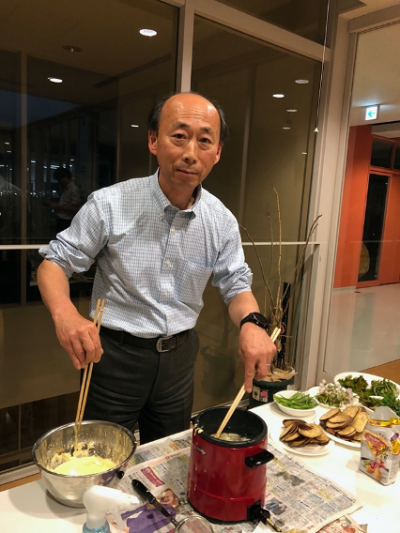
Shakuto: Let's start with this photo. Would you tell us where you were and what you were doing?
Mino: I’m making a tempura of wild plants on the University of Tokyo Kashiwa campus. I grew up in a household steeped in the values of a Japan when it was still a poor country and was greatly influenced by my grandmother, who was very old-fashioned. When I was small, my grandmother would collect mugwort and other seasonal wild plants in the neighborhood and make us tempura or boiled greens. They were so delicious! In this way, over time, I learned about edible wild plants. Since then, I have taken up hiking and have gradually expanded my knowledge by studying field guides and by other means. In 1999, when I moved to the Graduate School of Frontier Sciences, I organized the Kashiwa Campus Wild Plant Eating Club, which brought together a group of people who wanted to eat tempura of wild plants.
■■
Until 1998, Dr. Mino belonged to the University of Tokyo, Faculty of Engineering Department of Urban Engineering on the Hongo Campus where he taught courses such as environmental microbial engineering and the engineering of water quality change. In 1998, under the university’s academic initiative, faculty from various disciplines throughout the University of Tokyo were assembled in the newly established Graduate School of Frontier Sciences. Upon moving to the Department of Socio-cultural Environmental Studies, the Graduate School of Frontier Science, in 1999, Dr. Mino taught a course in “sustainable environmental technology systems” in which he explored various connections between society and technology.
Shakuto: So, while you were teaching about environmental technology systems theory, you were also eating wild plants! There are a lot of different types of wild plants in the photo. I didn’t know that there were so many that were edible.
Mino: That’s right. We would walk around the Kashiwa campus as a group and, whenever we found an edible wild plant, we would pick it and make it into a tempura or prepare it some other way.
Shakuto: I definitely want to try that. About how many people joined the club?
Mino: There were about ten, including a diverse mix of students, faculty and staff from various departments. I took part in a lot of fun activities on the Kashiwa campus, especially with the staff. At first, though, not a lot of faculty members came.
Shakuto: Why do you think that was the case?
Mino: I don’t know. It could be that many of them felt hesitant about letting loose and having fun on campus.
Shakuto: Why do you they might have felt in that way?
Mino: I think it’s difficult for most people, when they’re asked to do something work-related, to say, “sorry, I have something fun planned, so I can’t do it.”
■■
As I nodded in agreement, it occurred to me that we may have unconsciously internalized the view that “work” is essential while “play” is not.
Shakuto: But you didn’t you feel hesitant about playing?
Mino: Not in the least. That’s because I love to play. Whenever I would invite others to join in, I never hid the fact that “I’m going to play.” You can’t have fun otherwise. My goal was to advocate the importance of play by boldly stating, “I’m going to play.”
Shakuto: Why was it important for you to advocate the importance of play?
Mino: Appreciating the importance of “play” leads to value systems that, for example, value holidays and family. It is only natural for our priorities to differ depending on the time or place. The mindset that work is the most important thing under all circumstances or the question of whether work or family is more important are nonsense. If we start from the position that both are important, it will be easier for people to play.
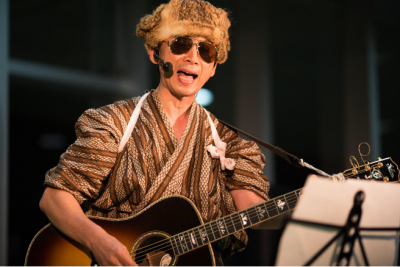
Shakuto: Play also has the power to bring lots of people together. I can feel that precise type of energy in this photo. What kind of play do we see in this picture?
Mino: It’s an event called the Division of Environmental Studies Proms, which was somewhere between a music festival and a social event. The event, which was held every year around Halloween time, was organized by members of the Division of Environmental Studies, which I belonged to. In this photo, I’m wearing a costume consisting of a yukata (summer kimono) and a fur hat from Siberia. The hat was a gift from a friend who bought it on a business trip to Russia.
Shakuto: It seems this is an example of play representing the meeting of many different cultures.
Mino: I think that song and food are powerful things that can connect people. When you’re cooking for yourself, you don’t think about going all out to make something. But, when you’re cooking for someone else, you want to make something tasty. It’s the same with music. When I was younger, I wrote and sang original songs because I wanted the attention of my peers. I probably have 25 songs like that.
Shakuto: Original songs! What kind of songs are they?
Mino: A lot of different ones. There are songs about the Netherlands where I stayed for a year as a researcher, and also love songs. The biggest genre is songs that I sang with friends I met in Taisetsuzan National Park. The first song that I ever wrote was also a Taisetsuzan song.
Shakuto: Is this a photo of Taisetsuzan?
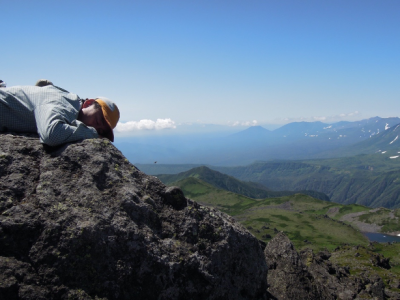
Mino: Yes. Actually, hiking in the mountains like this and writing songs all came about because of the people I met at a youth hostel in Taisetsuzan—people who have become friends for life. Right after I entered university some forty years ago, I climbed Taisetsuzan in Hokkaido. I became enchanted with the park’s magnificent nature and have since returned many times. Over these various visits, some friends and I formed a group whose common passion is to climb Mt. Tomuraushi, located in the deepest part of the Taisetsuzan volcanic group. We’ve promised each other to meet on the summit of Mt. Tomuraushi every ten years. Starting in 1981, the group has summitted the mountain in 1991, 2001, and 2011. Unfortunately, I was unable to participate in 2011. Instead, I got some friends together and climbed the mountain in 2016. This photo, taken on the summit of Mt. Tomuraushi, is from that trip. Some were married and came with their families. Some brought their kids and grandkids. In fact, I was joined by my niece on this trip. The next reunion is scheduled for next year, 2021. I can hardly wait. There’s no way of knowing what effect the coronavirus pandemic will have. But, assuming that we’ll be allowed to make the trip, I’ve started jogging to get in shape so that I can safely make it to the top of Mt. Tomuraushi.
Shakuto: There is something romantic about continuing to get together with the same group of friends every decade for forty years. What has motivated you to do it?
Mino: The friends that I’ve met in Taisetsuzan are a very diverse group. Some are company employees, but they range from CEOs to temporary workers. The same thing can be said about teachers. I’ve met elementary school teachers, university professors, and everything in between. I‘ve become friends with foresters and oden [fishcake stew] vendors. Among the many people I’ve met, one was the owner of a lodge known as a Lodge Nutapukaushipe. What I loved was this owner’s view of nature. What impressed me most was his sensibility, which transcended scholarly discipline, occupation, knowledge, or skills. He was always surrounded by different kinds of people. I could say that it was through this owner that I met so many different people. And, it is for this reason that I didn’t feel any resistance to dealing with people from all kinds of backgrounds in sustainability science.
■■
Dr. Mino is serving as the coordinator of the Graduate Program in Sustainability Science (GPSS) that was established in 2007 and has also edited three textbooks on sustainability science. Regarding the mindset needed when dealing with issues related to sustainability, the textbook published in 2019 points out, that there is a need to apply diverse frameworks to understand a given issue; a need to examine issues from not only an overarching viewpoint but, also, through the lens of diverse value systems; and a need to be aware that, while it is important to decide on a goal and move efficiently towards that goal, uncertainty is part and parcel to the process of achieving that goal.
Shakuto: You learned the importance to sustainability science of working with specialists in other fields from your experiences getting to know diverse people in the mountain. Did you intentionally design courses in the University of Tokyo Graduate Program in Sustainability Science (GPSS) so that the students have to work with specialists from different disciplines?
Mino: Yes, that’s right. In order to achieve sustainability, it’s very important that people meet face to face. Sustainability does not mean “continuing the same thing.” If you think about it, it would be unbearable if things stayed the same forever. The world is constantly changing. Sustainability means maintaining the “dynamism” that is needed to sustain this constant change.
Shakuto: What do you mean by “dynamism” needed to sustain change?
Mino: It is the ability of society to be able to provide opportunities for people to interact. It’s the interaction between people that brings for chemical reactions and serves as the driving force for society to change.
■■
I was suddenly reminded of the moment that the new initiative was born at the Tokyo College's “Thinking about the Future of the Humanities” online meeting. It was because of the diverse perspectives from participants straddling multiple disciplines including sustainability science, history, linguistics, sociology, and anthropology that the new initiative came into being.
Shakuto: It appears that your connections with a diverse group of people whom you met through “play” have had a substantial impact on your research.
Mino: Actually, I have gotten work as a result of channels that I developed through “play.” For example, one time, I happened to sit next to a Buddhist monk in a restaurant. We hit it off, and I ended up inviting him to participate in a workshop on the theme of “Religion and Sustainability.”
Shakuto: Dynamism can happen everywhere!
Mino: That’s exactly right. However, even if circumstances that might give birth to dynamism are there, we don’t always recognize them. And, in many cases, even though we’re aware that the circumstances are there, we don’t know what to do. I think that the role of education is to nurture individuals who are able to develop everyday connections between people into something greater.
■■
The Graduate Program in Sustainability Science (GPSS) for which Dr. Mino has served as coordinator since 2007 is operated entirely in English, from the entrance exam to the conferral of degrees, and hosts students from around the world. Since 2000, Dr. Mino has participated in and has offered numerous summer schools on the theme of sustainability as a part of activities organized by Taskforce on Environmental Education in the Alliance for Global Sustainability (AGS)— a partnership between the University of Tokyo, Massachusetts Institute of Technology (MIT), Swiss Federal Institute of Technology, and the Chalmers University of Technology.
Shakuto: So, the insights you’ve gained through “play” influence not only your research but, also, education. In concrete terms, what kind of learning does GPSS provide to transform connections between people into the dynamism needed to change society?
Mino: In the past, when we had a large-scale grant, we visited different locations around the world and explored various issues related to sustainability. Recently, we’ve been looking at issues closer to home such as the “redevelopment of the area in front of Kashiwa-no-ha Campus train station.” Kashiwa-no-ha Smart City is recognized as being a new model for urban development and receives hundreds of visitors each year. It is a place where issues with completely different vantage points such as energy, aging, internationalization, community development, education, and health and the interests of diverse stakeholders intersect. By intentionally assigning such cases to students, we provide them with opportunities to exchange opinions with people who have completely different perspectives from their own. We have valued such settings.
Shakuto: For you, the mountain, tempura, and singing were all means to interact with others.
Mino: The goal is to create places for people to interact. I find meaning in that.
■■
When I read Dr. Mino’s profile on the Tokyo College website, I would have never guessed that Dr. Mino found meaning in “creating interactions between people.” But outside the frame of the research website, his lifeworlds was made up of connections with many different people, from those he climbs mountains with, sings songs with, and eats tempura of wild plants with.
Beyond people, Dr Mino's lifeworlds is also made up of multiple spaces represented by each photograph such as “Kashiwa Campus” and “Taisetsuzan.” Yet these spaces are not distinct or separate. Neither is Dr. Mino at work separate from Dr. Mino at play. Rather, the distinctions between them are often blurred. The people that Dr. Mino has met through “play” that includes the mountains, song, and food influence his research. And, in some cases, they can become his collaborators. Those connections transcend not only space but also time. People that Dr. Mino met years ago as a student are influencing his students today who will in turn have an impact on others in the future.
Dr. Mino stated at the outset of the interview that face-to-face meetings are necessary so that we can encounter the various aspects that make up the lifeworlds of each person. This is what has motivated Dr. Mino to intentionally seek out chance encounters through play and has resulted in his embodying an interdisciplinary approach. Perhaps advocating the importance of play will make it easier for people to play, which, in turn, will provide us opportunities to see the value of life in a new light and enable us to escape the zero-sum game of work vs life.


